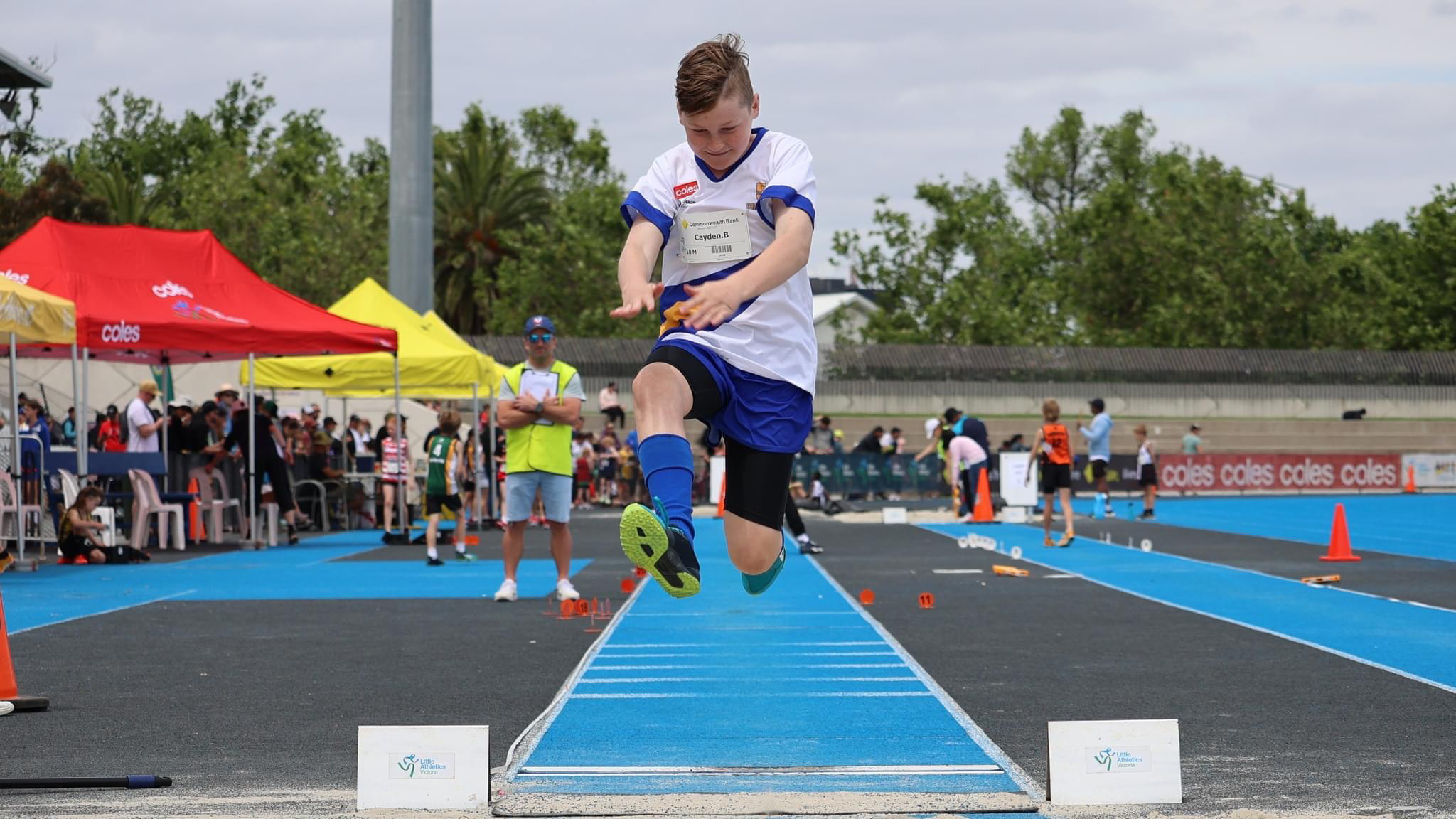Triple Jump

Triple Jump Skills
Technique
- Start at the run-up position.
- Run up length is approx. the athletes age in steps.
- Body position.
- Run tall on balls of feet.
- Action – Run Up.
- Build up speed – fast steps just before take-off.
- Action – Take off.
- When reach board or mat, take off from one foot.
- Push through calf, thigh and hip.
- Action – Flight.
- Stay tall with “proud chest” and head upright.
- Pattern is – Hop then step then jump.
- Foot placement is – preferred leg, other, together.
- Hop, step, and jump pace and power even.
- Hop.
- Motion forward.
- Step.
- Hold opposite knee high.
- Motion forward.
- Jump
- Keep head up (don’t look down towards take off board or pit).
- Motion up and forward.
- Brings arms through and forward.
- Action – Land.
- Land with feet together.
- Body weight goes forward (over feet).
- Hands forward.
- Exit forward out of the pit.
Modification Options
- Use a wider mat with thin layer of sand on top.
- Place mat closer to the pit.
- Measure from where the athlete takes off from on the mat.
- Appropriate for athletes with shorter jump lengths.
- Accept an approximation of the triple jump pattern.
- Encourage any part of the jump.
- Offer athlete to do long jump and long jump modifications.
- Athletes can use a wheelchair by doing wheel pushes in the triple jump pattern.
- Find a space away from the pit on clear runway or track.
- Ensure there is no risk of the wheelchair ending up in the sand pit.
- Create a take-off mark e.g. line or cones.
- Athlete completes a short approach of 2 to 3 pushes.
- When reach mark, athlete completes a series of strong arm pushes.
- Single arm.
- Opposite arm.
- Double arm.
- Measure from take off mark.
- Use bright markers for the path to run in and take off areas.
- For blind and low vision athletes, use a guide athlete. See the sensory page for more information.
Before you start
- Mark the edges of take-off board or mat with bright plastic markers or similar.
- Take off board or mat is flush with the ground and pegged in.
- Damp sand is raked and sufficiently soft to absorb landing impact.
Safety
- Runway is flat and clear of objects.
- No slip hazards on take-off board before each jump.
- If rakes, forks or shovels are placed on the ground, face prongs downwards.
- Do not leave them in or beside the landing pit.
- Rake and level the landing pit after each jump.
Measuring
- Spike from the nearest break in the sand to the front of the take off point.
- When is the jump a foul?
- Incorrect use of the hop, step and jump sequence.
- If the athlete takes off with two feet.
- Landing on the runway.
- If the athlete touches the ground past the take off board / mat.
- If the athlete walks back through the landing area after a completed jump.
Recording
- Record the distance to the nearest whole centimetre below the distance measured.





